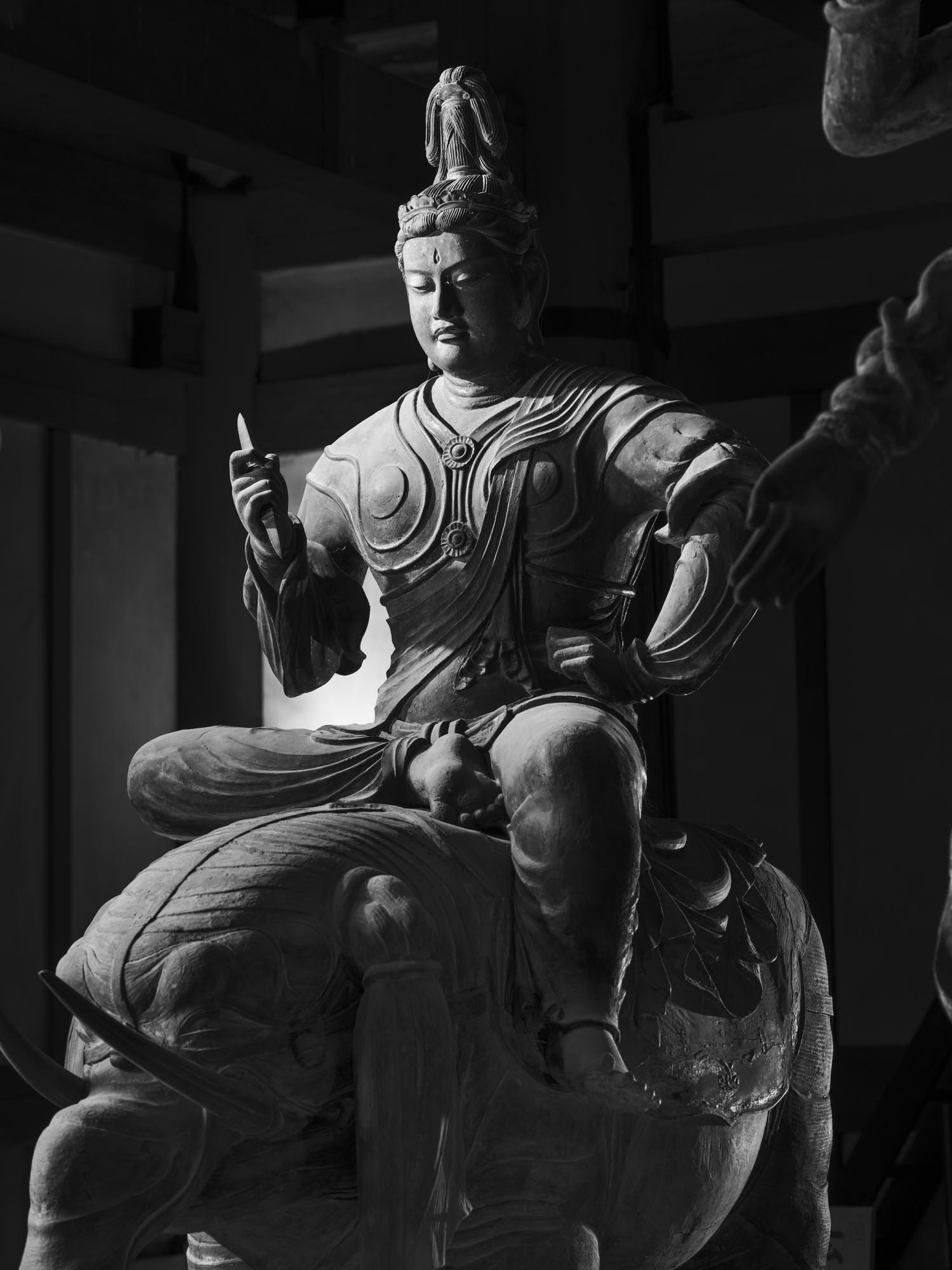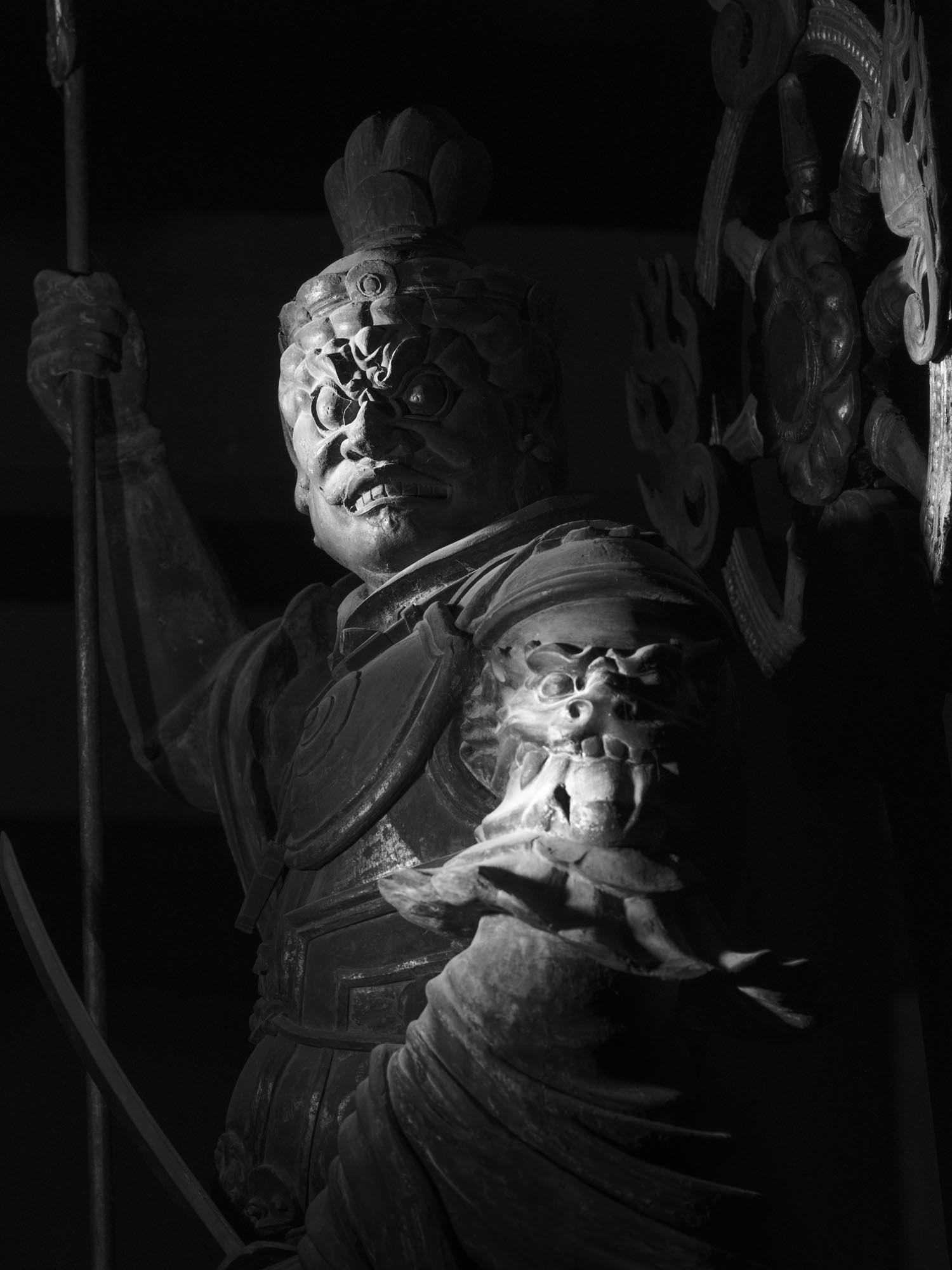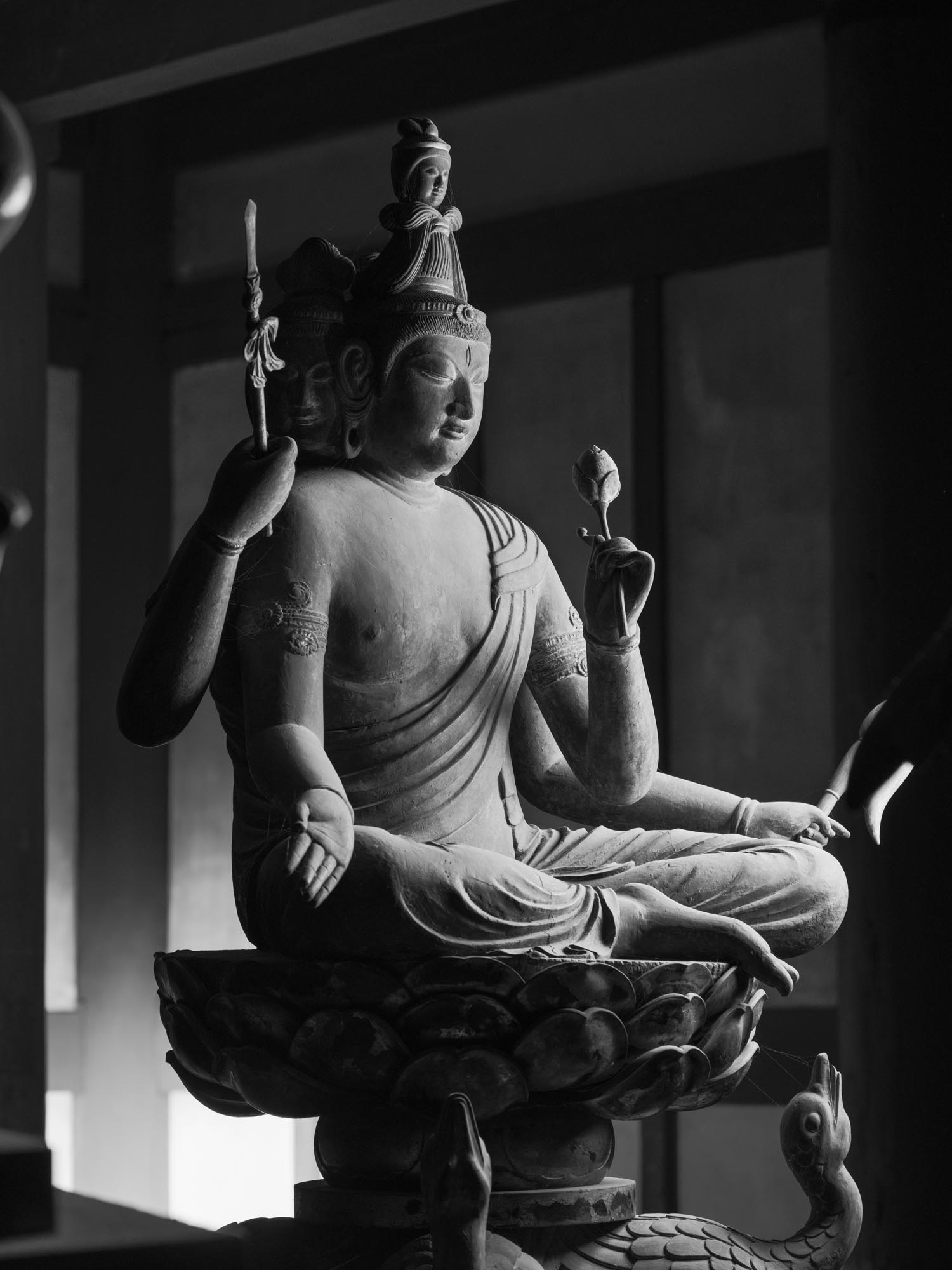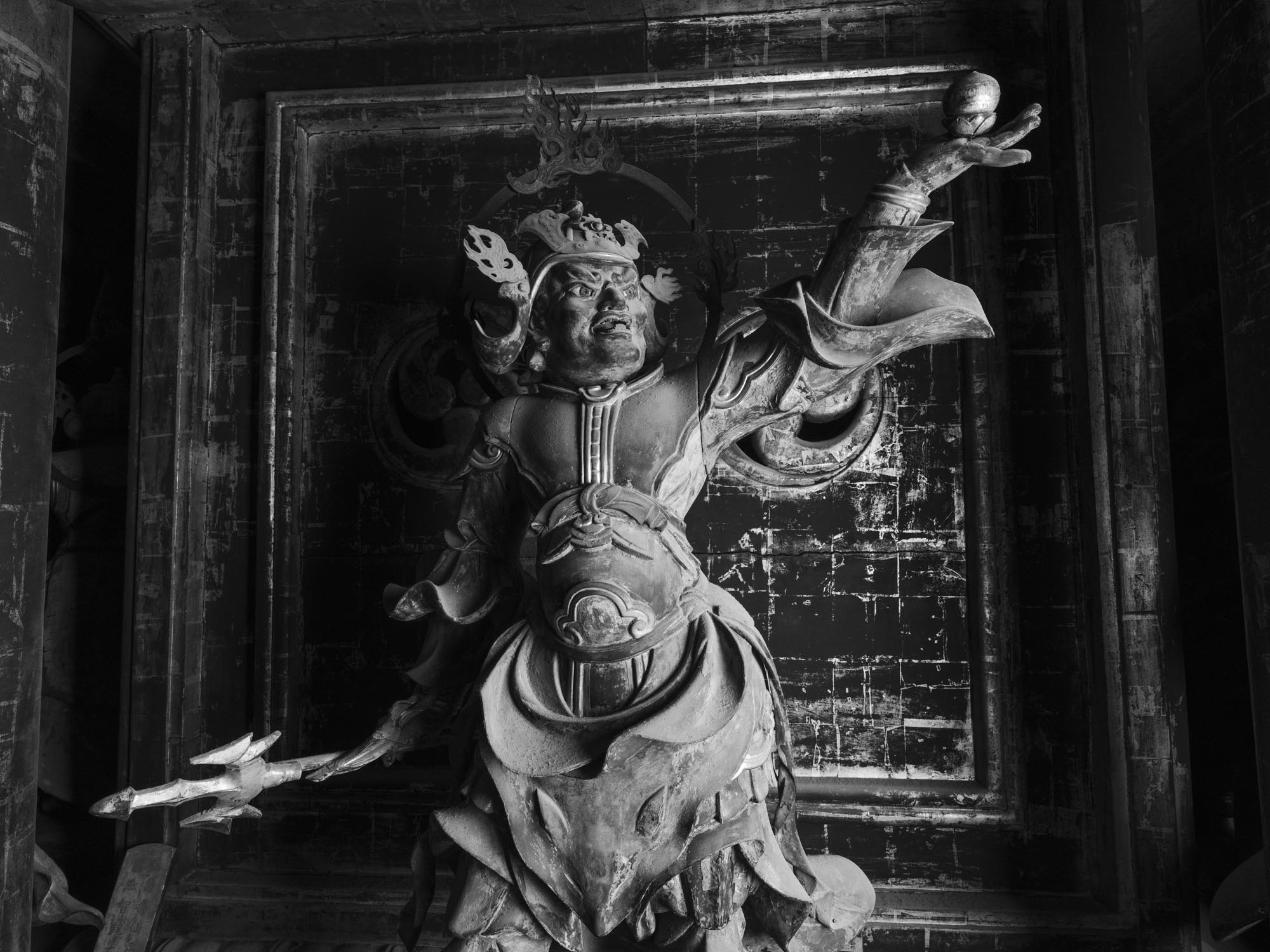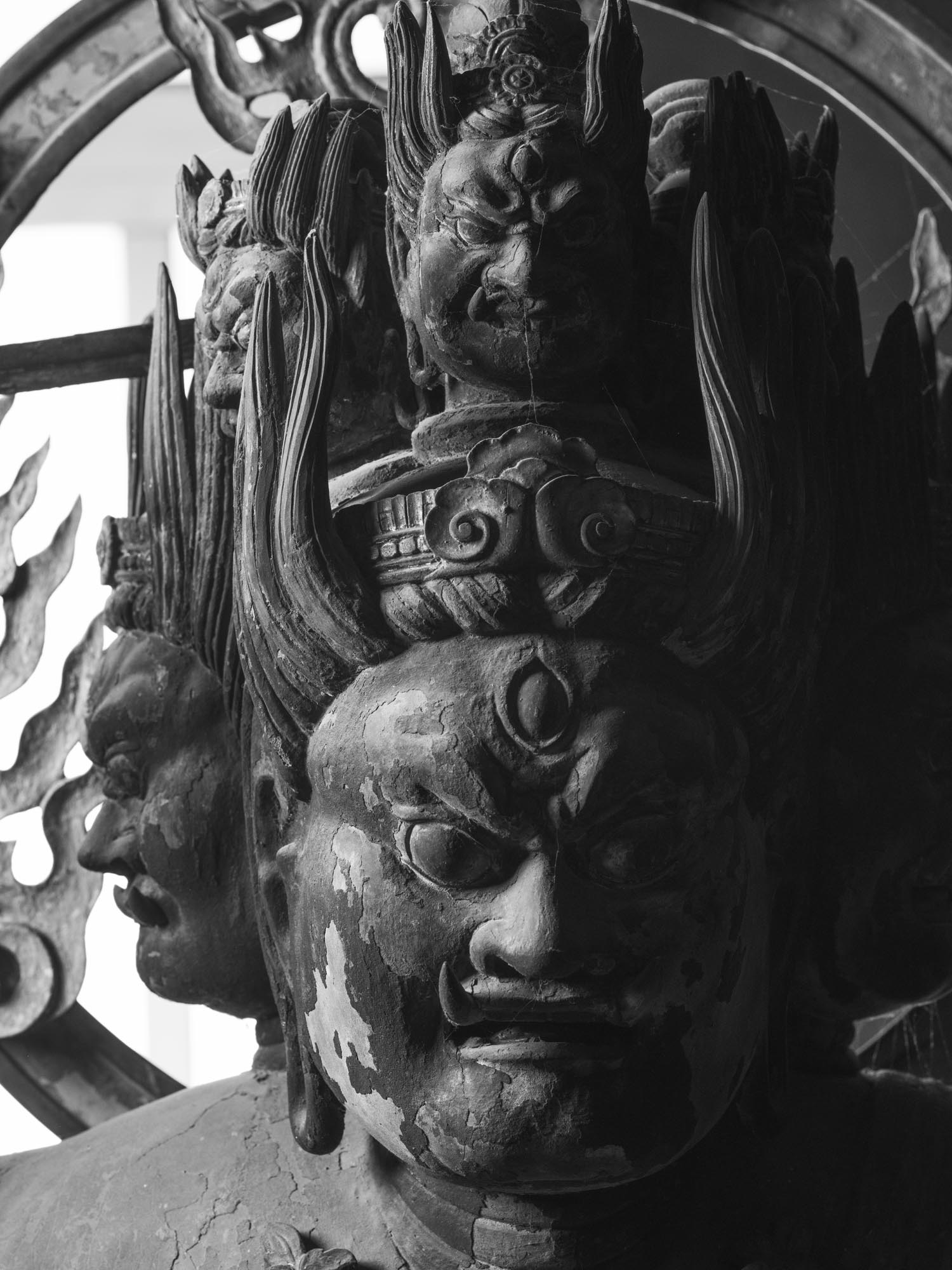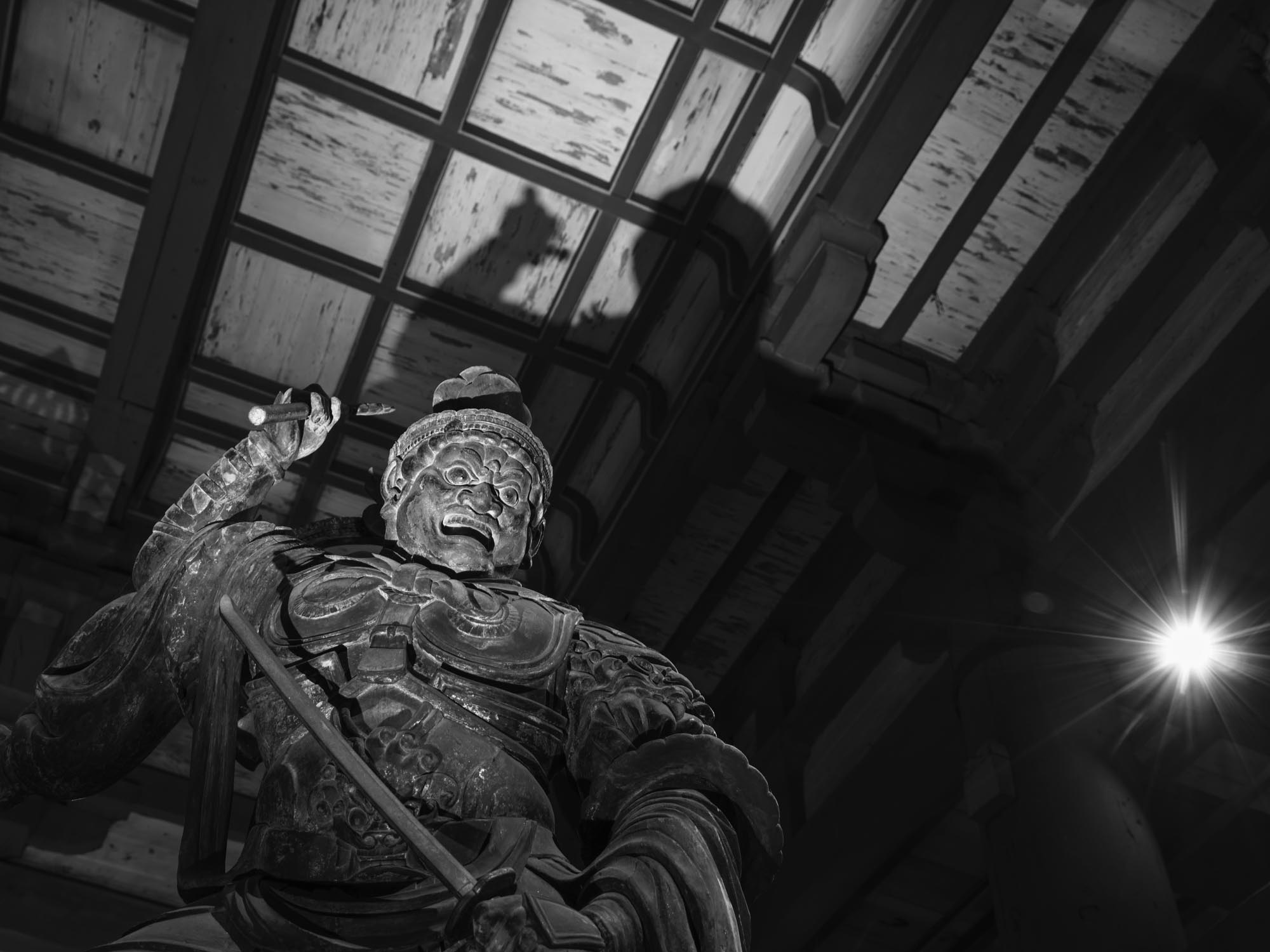
Yoshihiro Tatsuki
Born in Tokushima Prefecture in 1937, he joined the advertising production company Ad Center as a photographer in 1958. In 1969, he became a freelance photographer, focusing on women’s photography, and photographed many celebrities. In 1965, he was awarded the 9th Newcomer’s Prize of the Japan Photographic Critics Society, and his photo collections include “My America” and “Toji”. Tōkyōtō” in 2012, “Photography without Motive just because” in 2016, “Angel with Tongue” in 2018, “20C” in 2019, “Afternoon Paris” in 2020, and many others.
GFX100S Impression
About 20 years ago, I took a picture of Toji Temple. At the time, I was using a 6×8 film camera that I often used for work. When photographing Buddhist statues, I often think about whether to use an 8×10 or a 4×5, but since I had a limited amount of time, I thought that a 6×8 with a slightly elongated aspect ratio would be able to handle both horizontal and vertical positions.
For this shoot, I chose the GFX100S digital camera. According to the report, it has a 100 million pixels. In the world of digital cameras, “50 million pixels” has become the standard for high resolution. I was very interested to see what kind of expression would be created when the number of pixels reaches 100 million, and how people would feel when they saw a work of art shot with 100 million pixels. In the world of digital cameras, “full frame” is a major standard, but there are not many so-called “medium format” cameras. I wanted to know how the larger format would affect my photos, and I also wanted to experience the difference in expression between large and small prints.
My first impression of the GFX100S is that it is small. Compared to the previous GFX100, the GFX100S is more comfortable in the hand and has a phenomenal size. Although the lens will be heavy no matter how you use it, I have the impression that a prime lens such as the GF50mm will be OK for everyday snapshots. Snapshot photography with 100 million pixels is not very common yet, but it will be very interesting to see if it becomes widespread in the future.
Although the GF lens is heavy, it has been known for its photographic performance since the 6×8 film era, and I have experienced it myself. FUJINON has been attracting the attention of quality-conscious masters such as Irving Penn and Richard Avenon for its advertisements.
For professional photographers, the final form of a photograph is often a print. In the old days, you could tell if a photo was high definition by the number of lines it had. The Toji Temple photo book that I made at my own expense 20 years ago also required a particular printing technique to achieve a photo-like finish. I think that the increasing number of pixels in digital cameras means that such an experience will become easier for the general public. The taste of seeing a decent-sized print in reflected light has a power that is hard to dismiss. That’s great, and as a photographer, I welcome it.
The GFX100S is capable of shooting up to 400 million pixels by pixel shift. But with 400 million pixels, you need a solid “foundation” to prevent blur. It is only when lighting and framing are done properly that ultra-high image quality comes into play. Just because you have a high pixel count doesn’t mean you can take good pictures. Don’t make that mistake.
100 or 400 million pixels are not common yet but it would be necessary for the future. Even though almost no one has an 8K TV, some TV stations are trying 8K for now. In this sense, the GFX100S is an attractive camera as a “pioneer”.
With the advent of mirrorless cameras, cameras have become more accessible, and with the evolution of smartphone cameras, more and more people are able to take pictures without having to study the principles of photography. The fact that we have handed the fascination of photography to a large number of people is significant and very interesting, but I would like to say that the finish of a photograph is not the monitor but the print.
With new equipment, there is a sense of anticipation that something different can be taken. I am one of those people who try out different equipment depending on the type of shot, but a change in camera does change the picture. Just a little. To make a big change, you have to be able to get rid of the common sense and stereotypes that you are unaware of. That’s the hard part.
There is no right answer as to what the future of photography should be. Essentially, the photographic expression is a form of freedom and diversity. We are no longer in an age where gender is the deciding factor, and everyone is on the same line as a “photographer. We have finally reached a point where we can properly tolerate a variety of genres and themes with different qualities.
This is the age of war in photography. Whenever a new camera comes out, people start eating. When asked, “What is your favorite work of art so far?” I have high hopes for the GFX100S, as many people would answer, “The one I will take tomorrow.”















































